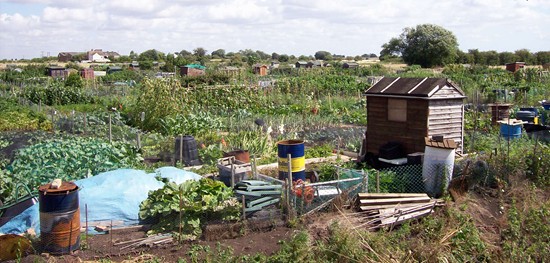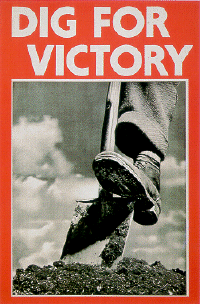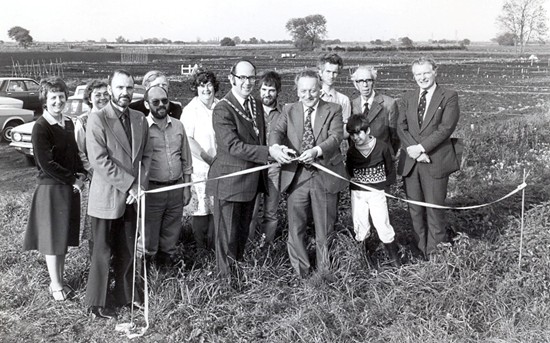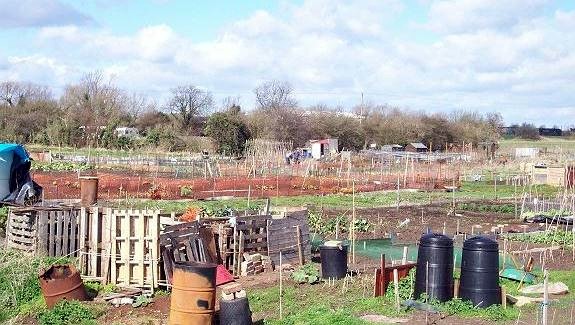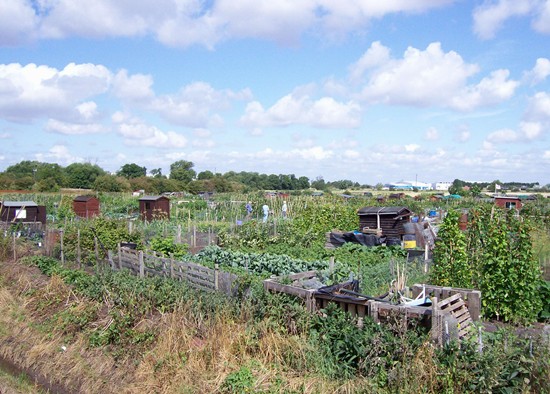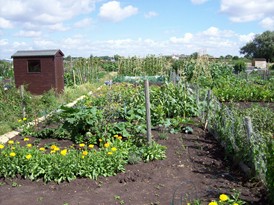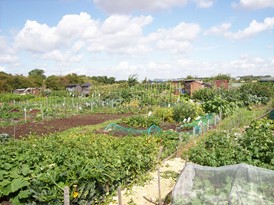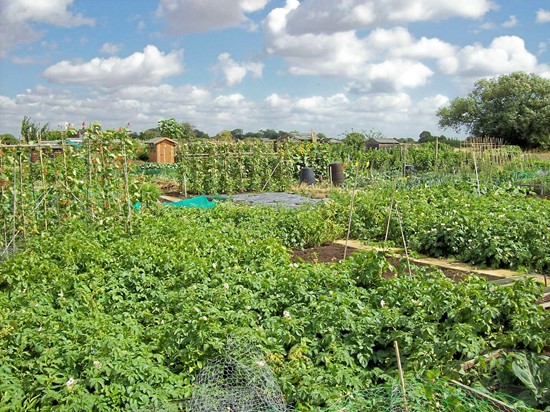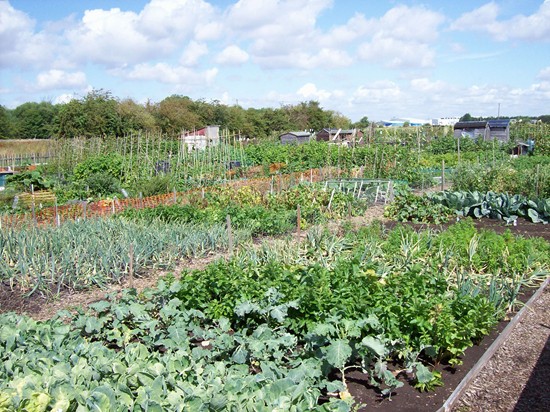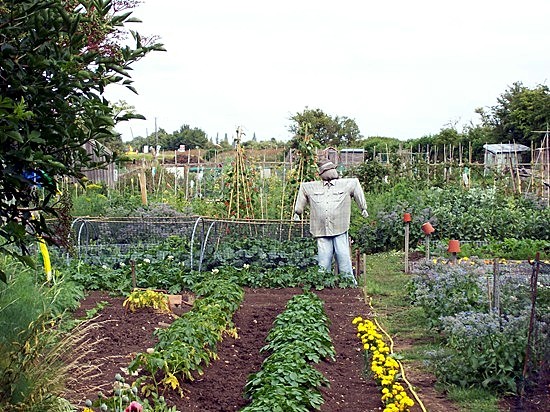|
Allotments
Those small plots
of land let out at low rents to enable families grow vegetables have been
part of the British way of life and the butt of music hall jokes for more than
two centuries and they survive today as a regular source of both fresh produce and rich humour. Allotments were regarded as an inducement to keep agricultural workers in the countryside and to stop the drift of much needed labour from the land to the towns and the Parish Councils Act of 1894 provided this stimulus and during the first four years of its working, almost 15,000 acres were allocated to 32,000 tenants. This impetus was reinforced by the Small Holdings and Allotments Acts of 1882 and 1908 which gave compulsory powers to local authorities to provide allotments. Many city dwellers took on allotments during the Great War and by 1918 there were 1.3 million of them producing vegetables at the impressive rate of 2,000,000 tons annually. As a result of later legislation, the system was here to stay, particularly the act of 1919 that enabled councils acquire land for the purpose of letting it out in small plots and, more specifically, the act of 1925 that empowered a borough or an urban district council acquire land with the approval of the Ministry of Agriculture. When the Second World War broke out in 1939, a campaign was launched in Britain under the slogan Dig for Victory and the Minister for Agriculture, Robert Hudson, spoke to the nation on the radio saying: Half a million more allotments properly worked will provide potatoes and vegetables that will feed another million adults and one and a half million children for eight months of the year so let's get going and let Dig for Victory be a matter for every man and woman capable of digging an allotment in their spare time.
In Bourne, allotments were provided at many locations by benevolent landowners, notably the Earl of Exeter (Lord of the Manor of Bourne), William Ann Pochin (Lord of the Manor of Bourne Abbots), Lord Aveland and Lord Willoughby. Nevertheless, the number of allotments available in Bourne was limited and a public meeting was called on Friday 3rd December 1886 to determine how it could be increased. The town at that time, as it is today, was in receipt of several charities, in particular the Harrington Charity, and a petition was signed by more than 150 labourers and cottagers and forwarded to the trustees requesting that a portion of the funds be set aside to provide allotments. This resulted in the provision of a further 150 allotments for working men while the charity reaped the benefits because the land provided was considerably improved by intensive cultivation and so increased in value under their tenancy. In February 1891, a deputation representing a further 54 working men who had no allotments approached the trustees for similar benefits and a local farmer was persuaded to let 36 acres of land situated near the town to increase the allotment system. Allotments were also discussed in Bourne during a Conservative meeting held at the Corn Exchange during the Whitsun week of 1888. Lord Aveland, then one of the district's principal landowners, promised the town that he would help provide them and the following August he gave two fields totalling 25 acres to be apportioned as allotments for labourers. There was a large and immediate response and sizeable plots were made available for the selected tenants, each allotment consisting of one acre at a rental of £1 per year. The fields had been previously tenanted by Mr George Sharman, a farmer who lived at the Auster Lodge, and so we may assume that they were situated in the south eastern area of the town. The land was ploughed and put in order before the 25 selected tenants took over in October that year. Another pioneer of allotments for working people was Lord Willougby who addressed a public meeting on the subject at the Victoria Hall [now demolished] in Bourne on Saturday 16th March 1889. The terms of agreement provided for sixteen cow pasture allotments of two acres each in Bourne Fen, with an annual rental of £2 per acre, payable half-yearly. There were also 17 one-acre allotments in two fields near the Auster Wood with an annual rental of £1 per acre, also payable half yearly. This was a very popular move by his lordship and there were 33 applicants for the large holdings, the first experiment of its kind in this part of Lincolnshire, and 51 applicants for the smaller holdings, and all were subsequently let. There are two areas of allotments in Bourne today but the size of them is far less generous than those of the 19th century. The smaller of these, owned by Bourne United Charities, is at the corner of Meadow Drove and Spalding Road and is divided into 18 plots that are all occupied. The other larger area of land is in South Fen Road and administered by the Town Council. Both enjoy the benefits of a rich, black soil and producing annual crops of vegetables for those who cultivate them at a fraction of the price they can be bought in the shops but far more importantly, providing a hobby for those with little garden space at their own home while also maintaining the tradition of self sufficiency.
Bourne Town Council purchased the land on South Fen Road in March 1982 from Lincolnshire County Council. The total area covers just over 4½ acres and includes a small
section of the old railway embankment. The land was divided into 89 plots for the use of allotment gardens
and all are occupied and vacancies are rare for very long. Every allotment holder signs an agreement at the beginning of their tenancy and pays a small amount of annual rent during January. Approval is also given for tenants to erect a small shed not larger than 4 ft x 6 ft for the safe keeping of tools and gardening equipment. A contractor is regularly maintaining the car parking area and roadways and there is also a water supply but it is turned off during the winter months. There has been a recent popularity in growing your own fruit and vegetables and by the summer of 2009, the town council had a list of 66 names of people wanting allotments and a possible wait of three years before they get one. Mrs Nelly Jacobs, clerk to the council, said that there was no further land available to create more at the moment and in an attempt to ease the demand, some of the larger plots were being divided into two as they become vacant and so the original number of 89 allotments had now increased to 92. There was also an indication that some existing tenants were unable to maintain them to a reasonable standard and so they were given an ultimatum to either tidy up their plots or surrender them to someone who would.
REVISED NOVEMBER 2018
Go to: Main Index Villages Index |
|||||||||||||||||||||||||||||
